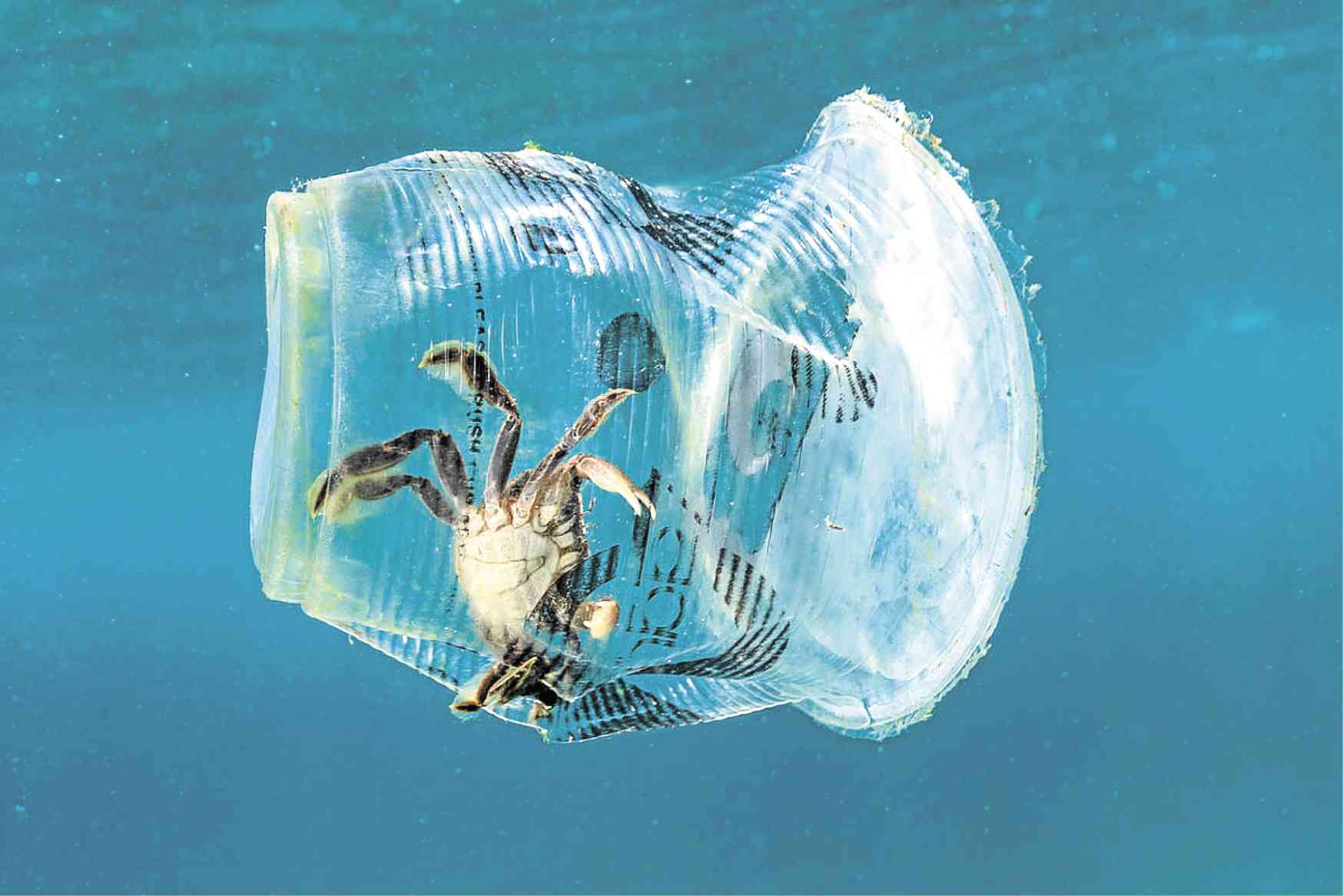
CRAB IN A CUP The impact of plastic pollution on marine life is evident in the waters of Verde Island Passage, as shown by a crab struggling to get out of a plastic cup carried by the current to this strait separating Batangas and Mindoro provinces. —PHOTO COURTESY OF GREENPEACE SOUTHEAST ASIA-PHILIPPINES
A tiny crab trapped in a discarded milk tea cup, along with a multitude of other food and shampoo packaging stuck in coral reefs, puts a new face to the global campaign against single-use plastics.
For three days, environmental group Greenpeace Southeast Asia-Philippines documented the marine ecosystem as it studied plastic pollution in the Philippines.
Footage compiled into a “heartbreaking” video showed that even the Verde Island Passage (VIP), which scientists have declared the world’s “center of the center of marine shore fish biodiversity,” was not spared.
Greenpeace’s first underwater documentation happened on March 7 to 9, with its iconic campaign and research ship, Rainbow Warrior, anchored near Maricaban Island in the popular diving site of Anilao in Mabini, Batangas.
The VIP is a 1.14-million hectare strait within the Mindoro-Calavite-Tablas triangle and shared by the provinces of Batangas, Marinduque, Romblon, and Occidental and Oriental Mindoro.
STUCK Among the pieces of garbage found stuck in clumps of coral at Verde Island Passage are plastic sachets of seasoning and condiments. —PHOTO COURTESY OF GREENPEACE SOUTHEAST ASIA-PHILIPPINES
Discarded sachets
The Philippines is at the apex of the Coral Triangle, a marine area and global priority for conservation.
Greenpeace campaigner Abigail Aguilar said a diver and a photographer filmed the ocean at varying depths, the deepest point at 25 meters. They took shots of a wrasse swimming by an empty toothpaste sachet and coffee, food seasoning and other branded food packaging trapped inside corals.
“While it’s really beautiful [down there], the state of the [plastic debris] shows they’ve been there for a long time,” Aguilar said in a telephone interview on Wednesday.
Greenpeace took note of the brand packaging, which Aguilar said ran “consistently” with those found during a 2017 “brand audit” of 55,000 pieces of plastic waste collected near Freedom Island in Metro Manila and the 1,500 pieces collected from Lahug River in Cebu province early this month.
A 2015 study by the University of Georgia said the Philippines ranked third, after China and Indonesia, with the highest amount of plastic waste produced, although Aguilar said the Philippines was a mere a recipient of plastic products from multinational companies.
Batangas Gov. Hermilando Mandanas on Wednesday said the local government appreciated Greenpeace’s efforts, as it vowed to join calls to preserve the VIP.
Pressure
“The documentation shows that even the pristine VIP [is not spared] from plastic pollution. All the more we need to call out these companies to change their business models,” Aguilar said.
She reiterated the group’s call on corporations to reduce and eventually phase out plastic packaging and explore alternatives to their consumer products.
“We believe [these companies] have the resources and capacity to make their products sustainable. Pressure is the keyword,” she said.